Charging equipment for electric road vehicles
Electric driving is the future. To participate in the environmentally friendly story, the necessary charging infrastructure must be provided. That is why more and more efforts are being made to install fixed charging equipment, both by private individuals and companies. Naturally, a number of technical regulations also apply to this.
A charging device contains one or more connection points through which energy is transferred to the electric vehicle. In the case of a permanently connected charging cable, this connection point is located at the end of this cable. In domestic installations, in most cases there will be only one charging device, with one connection point.
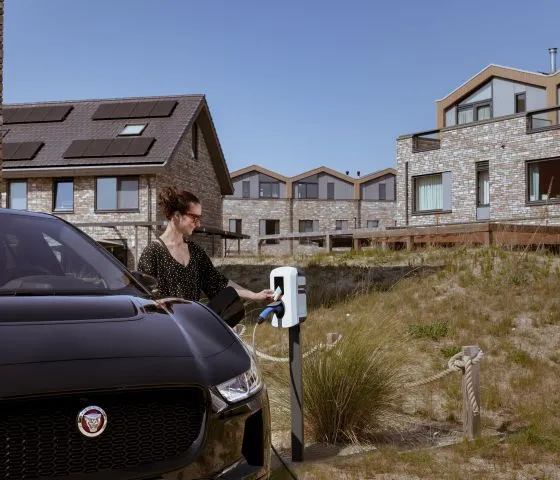
Installation instructions
Each connection point must be powered via an exclusively allocated circuit. The protective devices to be installed for this purpose are located in the loading facility, either in the upstream distribution board, or a combination of both. In concrete terms, this concerns:
An individual differential current protection device with a response current of a maximum of 30mA
An individual overcurrent protection device (circuit breaker)
When installing, the expected external influences must also be taken into account. In this respect, collision protection must be provided as soon as there is a reasonable risk of collision.
The manufacturer’s instructions must also always be followed.
CD fault currents
Charging devices appear to be known to generate non-negligible DC fault currents. Naturally, the upstream installation, and more specifically the differential current protection devices, must be able to withstand this. A type A differential current protection device has guaranteed operation up to a maximum of 6mA DC. In the case of larger DC fault currents, there is a chance that it will be made “blind”.
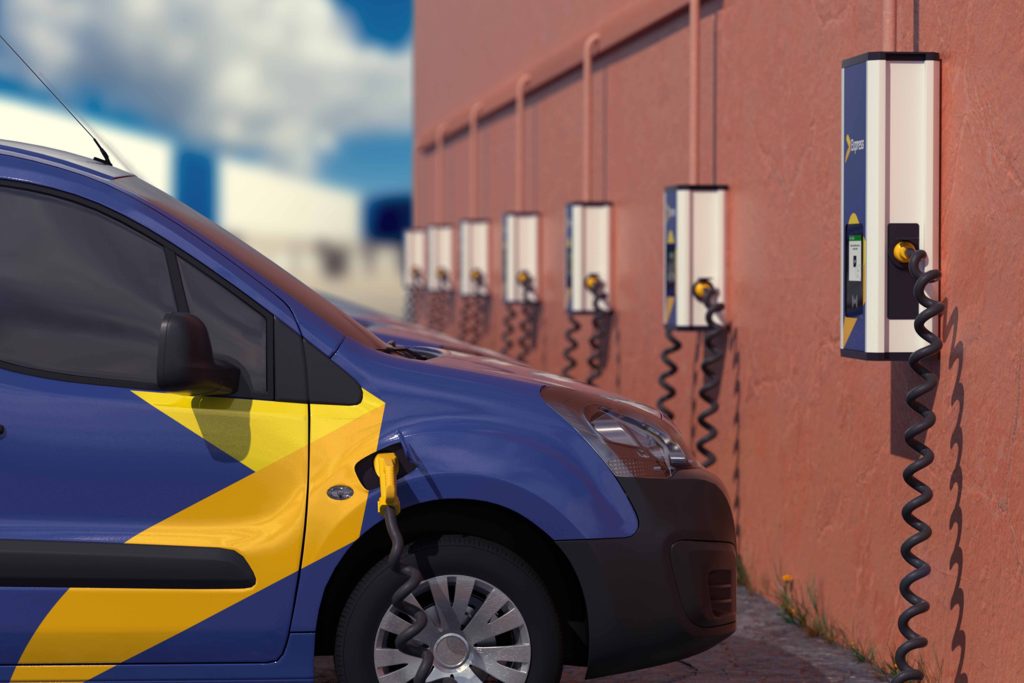
To address this, there are several solutions:
The assigned current path of the connection point is equipped with a residual direct current detection device of 6mA that causes the electrical equipment to switch off;
The assigned current path of the connection point (and any upstream differential current protection devices) is equipped with a type B differential current protection device.
As soon as several charging devices and/or several connection points are provided, the cumulative effect of all possible DC fault currents must be taken into account .
at this moment nothing is provided
Because the premiums change quickly, we would like to refer you to the page of the FPS Finance where you can find everything
https://www.vlaanderen.be/fiscaal-voordeel-voor-de-plaatsing-van-een-laadstation
for non-public chargers you can still have an eco-premium+, but there are strict conditions for this, you must have trucks or buses with 0% emissions and the chargers must be at least 150KW. view the conditions on the FPS Finance
As of 11 March 2021, it is compulsory to provide charging stations at certain new buildings in Flanders. Article 9/1.1.1. of the Energy Decree of 19 November 2010 states that certain buildings and parking areas for which an environmental permit is requested must have charging stations installed as of 11 March 2021.
The new legislation also imposes requirements on existing buildings where no environmental permit has been applied for. By 1 January 2025, companies with more than 20 parking spaces, among others, will have to install at least two charging stations for their employees or visitors, either AC or DC chargers.
More information about the requirements for charging points in parking areas can be found below
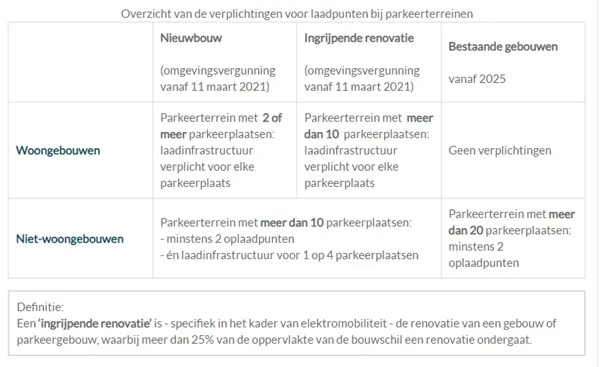
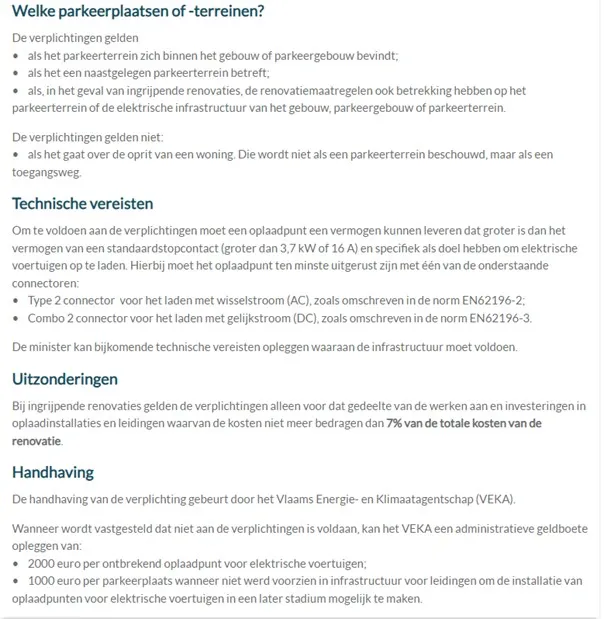
Daarnaast komt er vanaf 2025 een verplichting om opladers te plaatsten op parkings van bestaande, niet-residentiele gebouwen. Dit gaat over gebouwen zonder dat er een omgevingsvergunning is aangevraagd.
Daarom geeft de regering nu in Vlaanderen mooie subsidies om de mensen te stimuleren een laadpaal aan te schaffen voor thuis of op hun bedrijf.
The difference with Flanders is that from 11 March 2021 onwards you must install a charger on every parking area and this applies to parking lots with 11 or more parking spots.
For non-residential car parks such as shops, offices, industrial premises, schools, etc., the parking spaces in Wallonia must be equipped with at least one charger and the cables must be laid in order to be able to install a charger for at least 1 in 5 parking spaces in the future.
The rule for installing chargers in non-residential buildings with more than 20 parking spaces as of 2025 is still to be determined.
Specific rules apply to parking lots with at least 10 parking spaces and to new or old parking lots.
If you prefer, we can discuss this in a personal meeting with you.
For those who are looking to install a charging station at home, it is important to first consider where you are going to install the charger – indoors or outdoors? If it is installed indoors, then it is not a problem, but if it is installed outdoors, then it must have a high IP value and be able to withstand all types of weather. The latter also applies to companies that want to charge at their buildings or in the parking lot. If it is a car park where a wall installation is not possible, you will need to purchase an installation pole so that the charger can be installed as a ‘stand alone’ station.
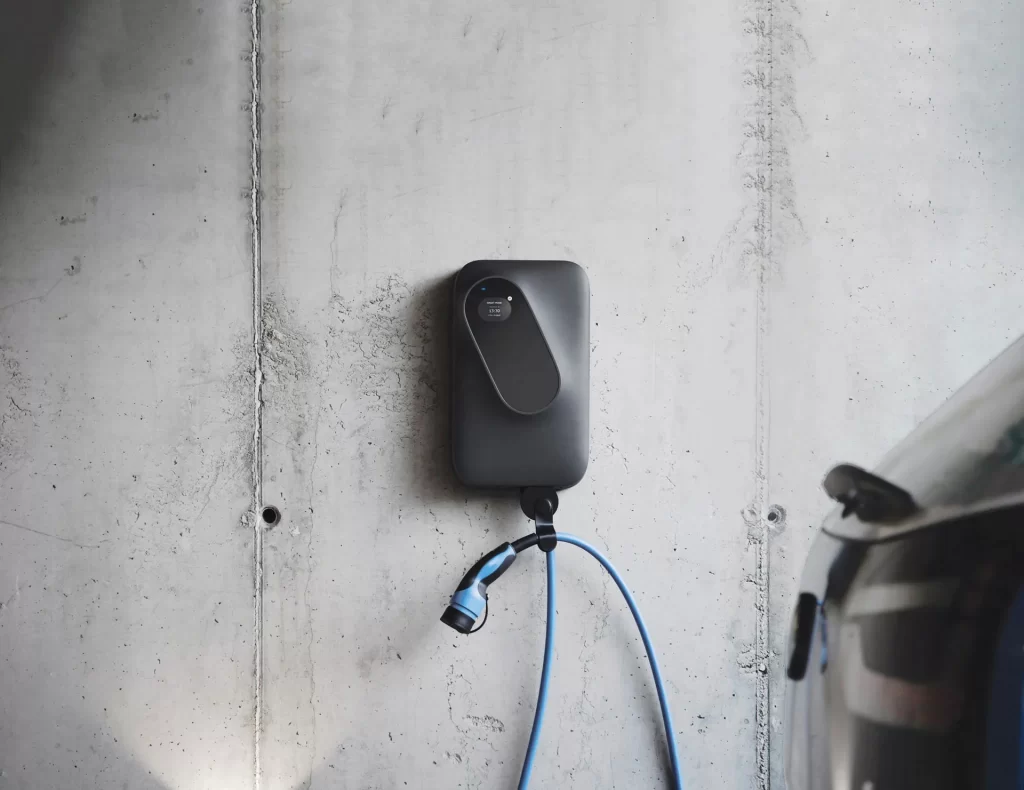
Also important is the distance from the fuse box to the charger. For home use we recommend to place the charger no more than 5 metres from the fuse box. That way, you can also keep the cost of the cables down. If this is not possible, you will have to use a thicker cable, which will make the installation a lot more expensive.
Another important factor is the electricity grid that you have at your disposal, e.g. single or three-phase, 16A or 32A, etc. Therefore, it is important to buy the right charger, depending on the power supply in your home or business.
At Q. EV. Solutions and distributions, we have certified technicians who will do the installation for you. Be sure to take a look at our page about installation locations, where you can find all the necessary information and prices
